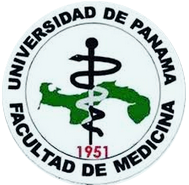Preparación Quirúrgica Preprotésica De Torus Mandibulares: Reporte De Caso Clínico
[Pre-Prosthetic Surgical Preparation of Torus Mandibularis: Clinical Case Report]
[Preparación Quirúrgica Preprotésica De Torus Mandibulares: Reporte De Caso Clínico [Pre-Prosthetic Surgical Preparation of Torus Mandibularis: Clinical Case Report]]
Paola Mitcella Vigil Morales1
1. Universidad de Panamá.
Descargas
Resumen
ResumenLos torus mandibulares son prominencias osteógenas benignas (no cancerosas) únicas o múltiples que se localizan adheridas a la tabla ósea lingual por encima de la línea milohioidea, específicamente a nivel del área de caninos, premolares y molares inferiores. Estos, pueden alterar la oclusión y el bienestar del paciente si no son abordados a tiempo. Con este caso, buscamos proveer información sobre el tratamiento correcto de los torus mandibulares cuando pensamos rehabilitar protésicamente a un paciente.
Paciente masculino de 72 años de edad se presenta a la Clínica Dental Domingo Amat de la Facultad de Odontología de la Universidad de Panamá, por deseos de mejorar su estética dental y facial, observamos torus mandibulares multilobulados bilaterales en el examen clínico intrabucal y se procede a realizar una cirugía ósea para su remoción total. El tratamiento quirúrgico de los torus mandibulares va a depender del fin protésico que planifiquemos y de cómo estos afecten el bienestar del paciente en general.
Abstract
The torus mandibularis are benign osteogenic prominences (non-cancerous) unique or multiple that are located adhered to the lingual bone table above the mylohyoid line, specifically at the lower canines, premolars and molars area. They can alter the occlusion and well-being of the patient. With this case, we seek to provide information on the correct treatment of the torus mandibularis when we plan to rehabilitate a patient with prosthesis.
Year-old male patient introduces himself to the Domingo Amat Dental Clinic of the Faculty of Dentistry of the University of Panama to improve his dental and facial aesthetic; we observed bilateral multilobed torus mandibularis in the intraoral examination so we proceed to perform a bone surgery for total removal of them. The surgical treatment of the torus mandibularis will depend on the prosthetic purposes we plan to outcome and also how do they affect the well- being of the patient.
Abstract
Resumen
Los torus mandibulares son prominencias osteógenas benignas (no cancerosas) únicas o múltiples que se localizan adheridas a la tabla ósea lingual por encima de la línea milohioidea, específicamente a nivel del área de caninos, premolares y molares inferiores. Estos, pueden alterar la oclusión y el bienestar del paciente si no son abordados a tiempo. Con este caso, buscamos proveer información sobre el tratamiento correcto de los torus mandibulares cuando pensamos rehabilitar protésicamente a un paciente.
Paciente masculino de 72 años de edad se presenta a la Clínica Dental Domingo Amat de la Facultad de Odontología de la Universidad de Panamá, por deseos de mejorar su estética dental y facial, observamos torus mandibulares multilobulados bilaterales en el examen clínico intrabucal y se procede a realizar una cirugía ósea para su remoción total. El tratamiento quirúrgico de los torus mandibulares va a depender del fin protésico que planifiquemos y de cómo estos afecten el bienestar del paciente en general.
Abstract
The torus mandibularis are benign osteogenic prominences (non-cancerous) unique or multiple that are located adhered to the lingual bone table above the mylohyoid line, specifically at the lower canines, premolars and molars area. They can alter the occlusion and well-being of the patient. With this case, we seek to provide information on the correct treatment of the torus mandibularis when we plan to rehabilitate a patient with prosthesis.
Year-old male patient introduces himself to the Domingo Amat Dental Clinic of the Faculty of Dentistry of the University of Panama to improve his dental and facial aesthetic; we observed bilateral multilobed torus mandibularis in the intraoral examination so we proceed to perform a bone surgery for total removal of them. The surgical treatment of the torus mandibularis will depend on the prosthetic purposes we plan to outcome and also how do they affect the well- being of the patient.
Citas
[1] Khan S et al. Concurrence of Torus Palatinus, Torus Mandibularis and Buccal Exostosis. J Coll Physicians Surg Pak. 2016;26(11):111-113.
[2] García-García AS et al. Current status of the torus palatinus and torus mandibularis. Med Oral Patol Oral Cir Bucal. 2010; 15:e353-360.
[3] Choi Y et al. Prevalence and anatomic topography of mandibular tori: computed tomographic analysis. J Oral Maxillofac Surg. 2012; 70:1286–1291.
[4] Al-Bayaty HF, Murti PR, Matthews R, Gupta PC. An epidemiological study of tori among 667 dental outpatients in Trinidad & Tobago, West Indies. Int Dent J. 2001; 51:300-304.
[5] Meza J. Cavidad Oral: Torus palatinus y Torus mandibularis. Rev. gastroenterol. Perú [online]. 2004; 24 (4): 343-348. Disponible en: http://www.scielo.org.pe/scielo.php? script=sci_arttext&pid=S1022-51292004000400007&lng=es.
Licencia
Derechos autoriales y de reproducibilidad. La Revista Médica de Panama es un ente académico, sin fines de lucro, que forma parte de la Academia Panameña de Medicina y Cirugía. Sus publicaciones son de tipo acceso gratuito de su contenido para uso individual y académico, sin restricción. Los derechos autoriales de cada artículo son retenidos por sus autores. Al Publicar en la Revista, el autor otorga Licencia permanente, exclusiva, e irrevocable a la Sociedad para la edición del manuscrito, y otorga a la empresa editorial, Infomedic International Licencia de uso de distribución, indexación y comercial exclusiva, permanente e irrevocable de su contenido y para la generación de productos y servicios derivados del mismo. En caso que el autor obtenga la licencia CC BY, el artículo y sus derivados son de libre acceso y distribución.









